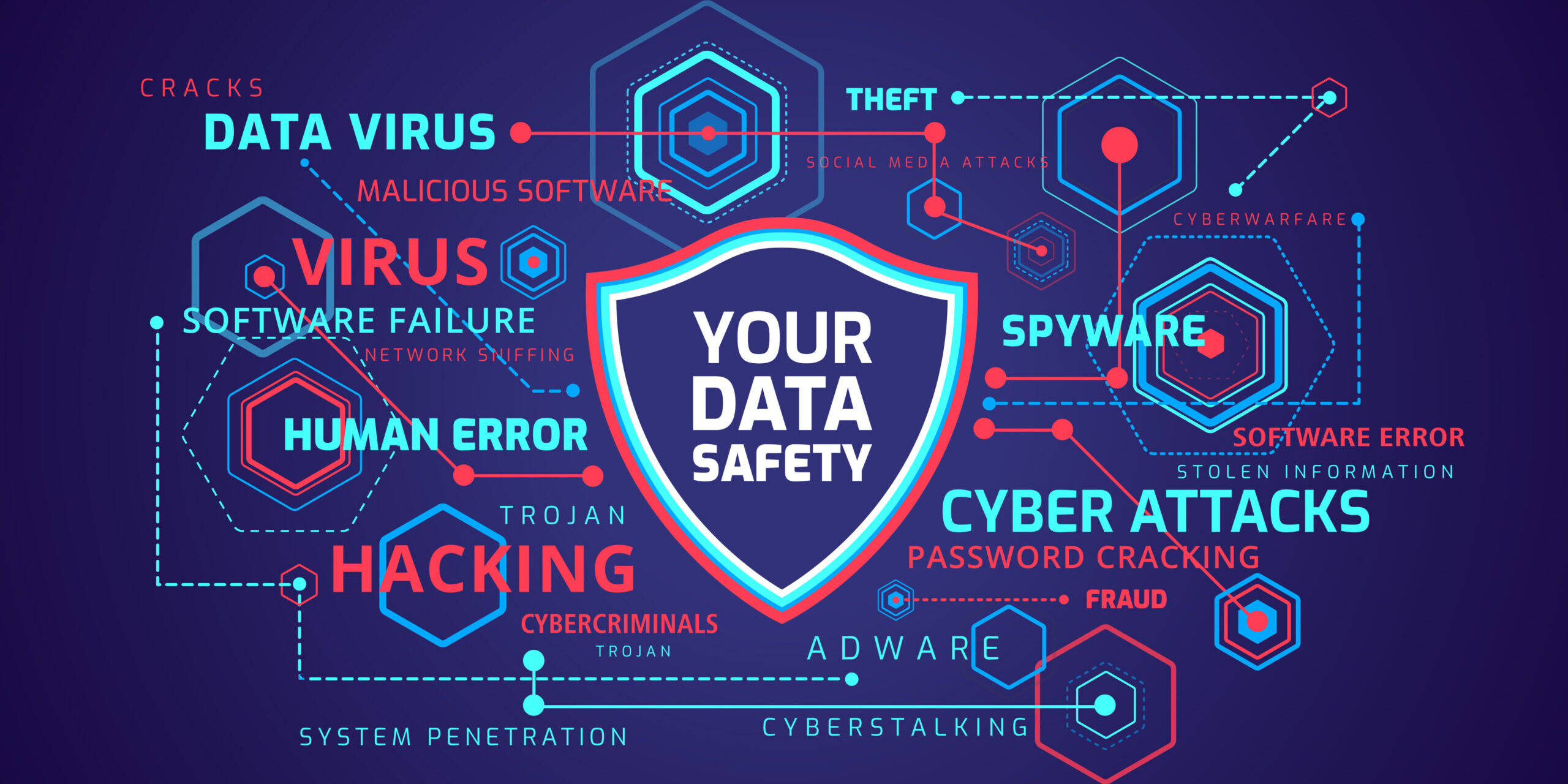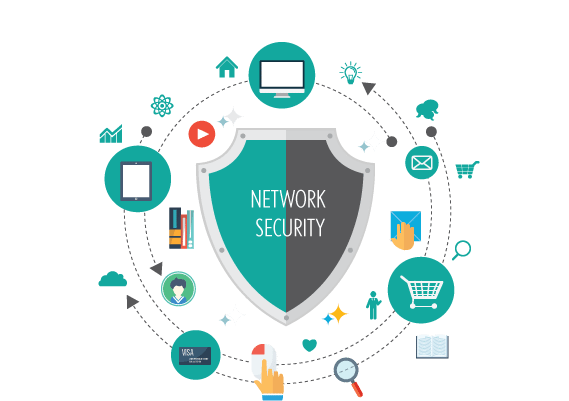Just How Information and Network Safety Secures Against Emerging Cyber Dangers
In an era noted by the quick development of cyber risks, the significance of data and network safety has actually never been more obvious. Organizations are progressively reliant on sophisticated safety and security procedures such as file encryption, accessibility controls, and proactive surveillance to secure their digital possessions. As these dangers become extra complicated, understanding the interaction between information safety and network defenses is necessary for reducing threats. This discussion intends to check out the important elements that strengthen an organization's cybersecurity posture and the methods necessary to remain in advance of potential susceptabilities. What remains to be seen, nonetheless, is how these actions will evolve despite future difficulties.
Understanding Cyber Dangers

The ever-evolving nature of modern technology constantly presents brand-new susceptabilities, making it vital for stakeholders to remain attentive. Individuals may unwittingly come down with social engineering methods, where assaulters adjust them into revealing delicate information. Organizations face distinct obstacles, as cybercriminals frequently target them to manipulate valuable data or interrupt procedures.
In addition, the increase of the Web of Points (IoT) has expanded the assault surface area, as interconnected tools can act as entrance factors for assailants. Acknowledging the value of durable cybersecurity practices is vital for reducing these threats. By cultivating a comprehensive understanding of cyber companies, people and threats can carry out efficient strategies to safeguard their electronic possessions, ensuring resilience in the face of an increasingly complex risk landscape.
Trick Elements of Information Protection
Making certain information safety and security needs a diverse method that includes various key components. One basic component is information file encryption, which transforms sensitive details right into an unreadable style, available only to accredited users with the appropriate decryption keys. This acts as an important line of defense against unauthorized accessibility.
One more important component is accessibility control, which regulates that can watch or adjust information. By carrying out rigorous customer verification methods and role-based accessibility controls, organizations can minimize the threat of expert threats and data breaches.

Furthermore, data covering up techniques can be employed to shield delicate information while still enabling its usage in non-production settings, such as screening and advancement. fft perimeter intrusion solutions.
Network Safety And Security Techniques
Executing robust network safety and security techniques is important for safeguarding a company's digital infrastructure. These approaches entail a multi-layered approach that consists of both equipment and software solutions created to safeguard the integrity, discretion, and accessibility of data.
One important component of network protection is the implementation of firewalls, which offer as a barrier in between trusted interior networks and untrusted outside networks. Firewall programs can be hardware-based, software-based, or a combination of both, and they help filter inbound and outgoing web traffic based on predefined security policies.
Additionally, breach detection and prevention systems (IDPS) play a vital function in monitoring network traffic for dubious activities. These systems can signal administrators to possible breaches and act to minimize risks in real-time. On a regular basis updating and patching software application is additionally crucial, as susceptabilities can be exploited by cybercriminals.
In addition, executing Virtual Private Networks (VPNs) makes sure secure remote gain access to, securing information transmitted over public networks. Segmenting networks can decrease the strike surface area and contain potential breaches, limiting their effect on the general framework. By taking on these techniques, organizations can properly fortify their networks versus emerging cyber dangers.
Best Practices for Organizations
Developing finest practices for companies is critical in preserving a strong security stance. An extensive method to information and network safety begins with regular danger evaluations to identify susceptabilities and potential threats.
In addition, constant staff member training and understanding programs are important. Employees must be educated on acknowledging phishing attempts, social design strategies, and the significance of sticking to why not try here safety and security methods. Routine updates and spot monitoring for software application and systems are also essential to safeguard versus known susceptabilities.
Organizations must establish and examine incident action plans to ensure readiness for potential violations. This consists of establishing clear communication channels and duties during a protection event. Moreover, information security need to be used both at remainder and en route to safeguard sensitive information.
Finally, performing periodic audits and compliance checks will certainly aid ensure adherence to recognized plans and relevant regulations - see here fft perimeter intrusion solutions. By following these finest methods, organizations can considerably boost their strength against arising cyber threats and secure their essential properties
Future Trends in Cybersecurity
As organizations browse a progressively complicated electronic landscape, the future of cybersecurity is poised to progress significantly, driven by emerging technologies and moving hazard paradigms. One noticeable pattern is the integration of expert system (AI) and artificial intelligence (ML) into safety frameworks, enabling real-time danger discovery and action automation. These innovations can assess vast quantities of data to identify anomalies and prospective breaches more successfully than traditional approaches.
One more essential pattern is the increase of zero-trust style, which calls for continuous confirmation of user identifications and device security, no matter of their area. This approach reduces the danger of insider dangers and boosts protection against external attacks.
Furthermore, the boosting fostering of cloud services requires robust cloud safety methods that deal with distinct susceptabilities connected with cloud atmospheres. As remote job ends up being an irreversible fixture, safeguarding endpoints will certainly also become paramount, leading to an elevated focus on endpoint detection and response (EDR) options.
Finally, regulatory compliance will certainly remain to form cybersecurity practices, pressing organizations to embrace a lot more rigid data defense actions. Accepting these trends will certainly be necessary for companies to strengthen their defenses and navigate the developing landscape of cyber hazards effectively.
Conclusion
Finally, the implementation of durable information additional reading and network security actions is essential for companies to protect versus emerging cyber hazards. By utilizing file encryption, access control, and reliable network security techniques, organizations can dramatically decrease vulnerabilities and secure sensitive details. Embracing ideal practices even more boosts durability, preparing organizations to deal with advancing cyber challenges. As cybersecurity remains to develop, remaining informed regarding future patterns will be vital in maintaining a solid defense versus potential threats.
In an era noted by the quick advancement of cyber threats, the importance of data and network security has never ever been more noticable. As these threats come to be extra intricate, understanding the interaction in between data security and network defenses is necessary for reducing threats. Cyber dangers incorporate a broad range of malicious tasks intended at jeopardizing the confidentiality, honesty, and schedule of networks and information. A comprehensive technique to data and network protection starts with normal threat analyses to determine vulnerabilities and potential hazards.In conclusion, the implementation of durable information and network protection actions is essential for organizations to secure versus emerging cyber dangers.